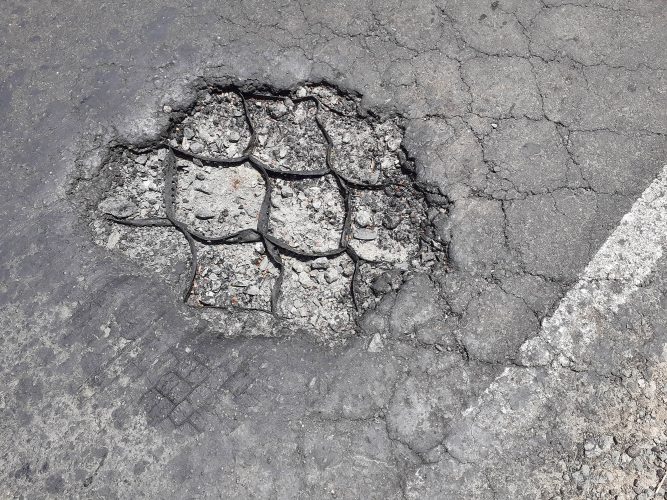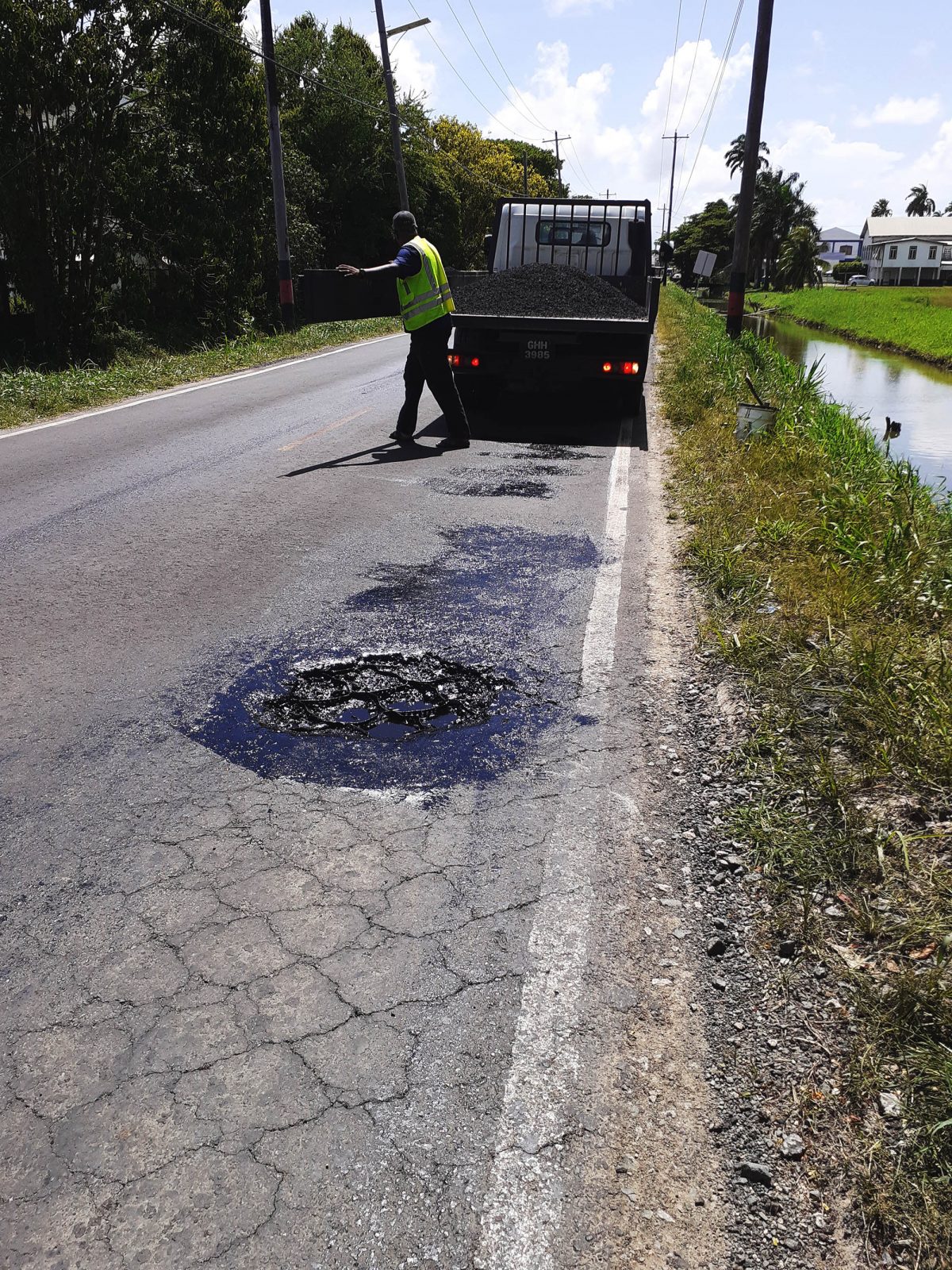Repairs have commenced on Thomas Lands after problems developed with recent rehabilitation work.
The contractor, Pooran Manman and Sons Con-tracting Services, was yesterday preparing to lay a second layer of asphalt on a pothole that developed along the 200-metre stretch of the road that had only recently undergone repair works.
Company manager Pooran Manman told Stabroek News that a second layer of asphalt will be placed on the sections of the road that have started to deteriorate.

Manman explained that if the 200-metre portion of the road continues to see slippage and additional potholes on either side, then the entire stretch of asphalt will have to be dug up and the road will have to be reconstructed.
“Well if the road continue like this then dah might gah be the next step but for now we just fixing the failing section them”, he said.
When asked if part of the payment from the $30 million contract for the initial works was withheld, the Manager acknowledged that that was so and noted that it was done due to the current failure in the asphalt and ongoing observations by the Ministry of Public Works.
He also noted that there is no certainty that the company would be paid the outstanding amount after placing the second layer of asphalt.
“Them (the government) didn’t pay no money fuh the asphalt because of this section and we believe, that based on my engineers, that this slipping come from the shoulder (while pointing to the two sides of the road)…we are not sure because they still doing observation and checks on what was really the cause of the slipping,” said Manman.
Minister of Public Works Juan Edghill had previously told this newspaper that the company had used a three-tonne roller instead of a ten-ton roller, which was the required standard in order for the asphalt to have maximum compression.
“The problem was…and he (the company’s contractor) was told by the engineers who have been investigating to see what’s happening, the day when he (the contractor) placed the asphalt, he did not have a ten-tonne roller to compress the asphalt so instead he used a three-tonne roller.”
“So because the asphalt is not properly compressed, because it didn’t have the required weight-roller to compress it, so when the rain falls with all of that intensity, the water goes between and that’s what’s causing the cracking, resulting in the failure of the asphalt. It has nothing to do with the technology, it has to do with bad compression,” Edghill explained.
It is unclear why the ministry’s engineers/supervisors did not ensure that the 10-tonne roller was used. Concerns have been expressed about the risk of shoddy work in the large amount of public sector contracts being handed out by the government.
According to the website landscapediscount. com, “geocells are vinyl web structures placed on the ground to provide structural support and stability when filled with soil or aggregate material. Geocells are commonly used for driveways, roads, and other soil stabilization. They are also used for erosion control on hillsides.”
The new geo-cell technology, which can be seen along the deteriorated section of the road, should have been able to provide the said structural and stable framework for the roadway, which is bordered by trenches on either side, instead of revetment works, which the minister had said was under consideration. (Aviso Paul)










